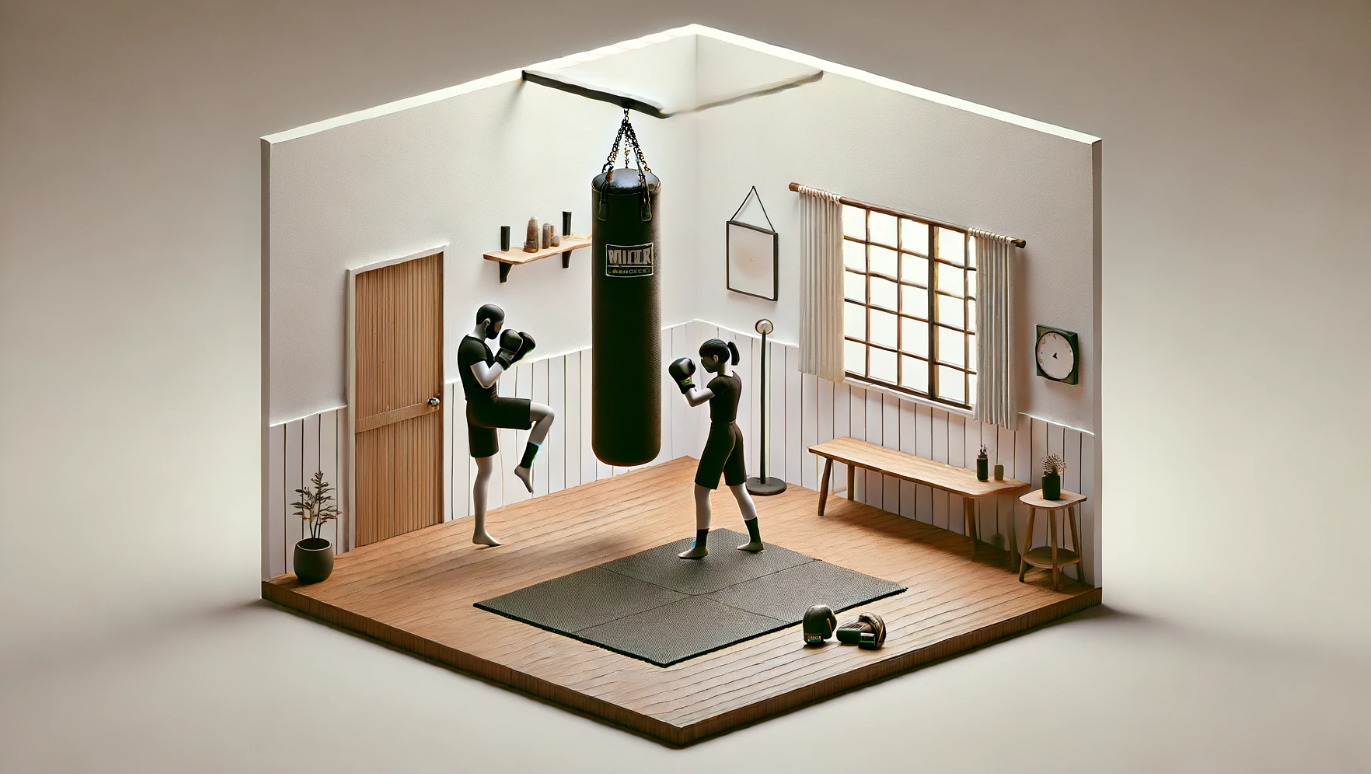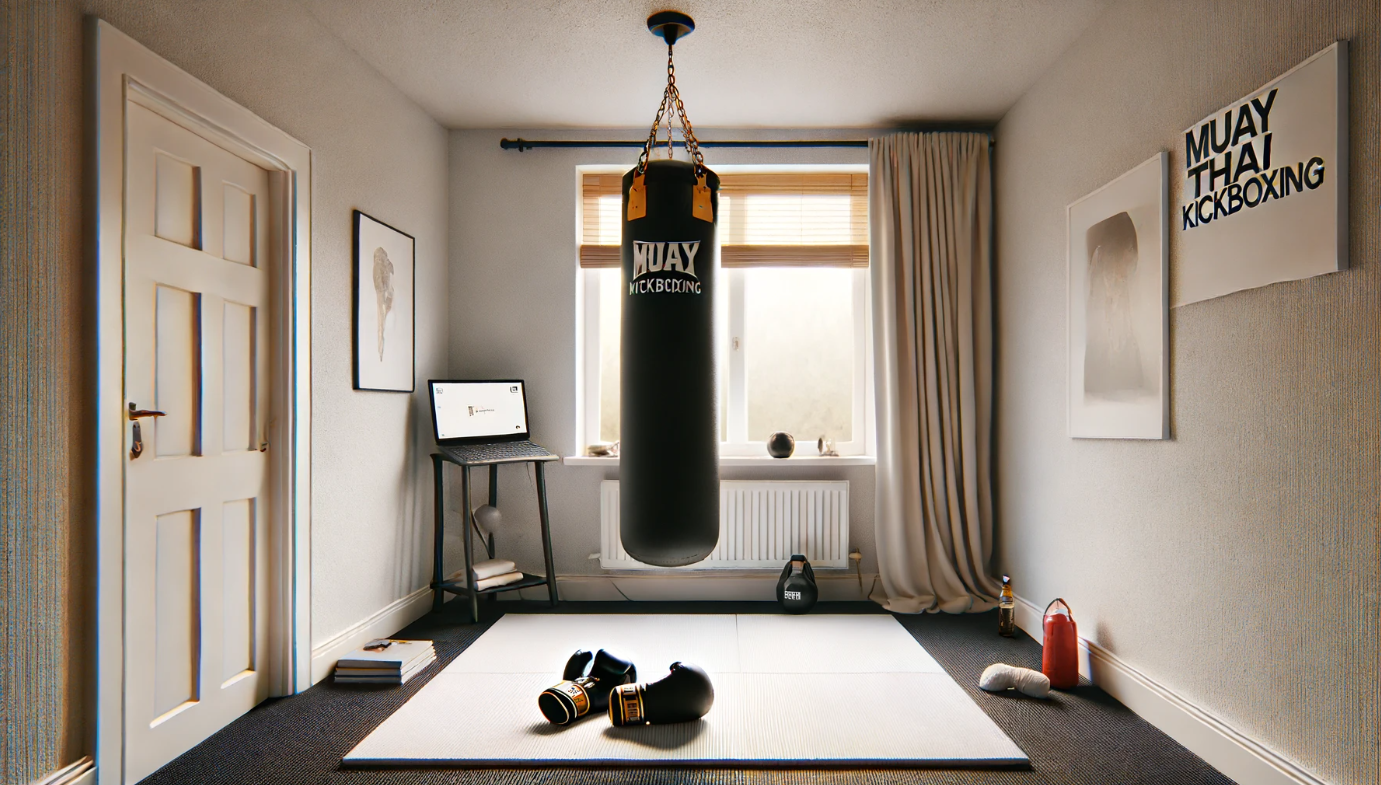Muay Thai Gym&Trainer
Muay Thai Kickboxing Workouts for Home: Getting Started Without a Gym
Introduction to Muay Thai Kickboxing Workouts
Muay Thai, known as the “Art of Eight Limbs,” is a dynamic martial art from Thailand that uses punches, kicks, elbows, and knees. Training in Muay Thai improves fitness, coordination, and mental discipline.
Essential Gear for Muay Thai Training at Home
- Gloves: Protects your hands during strikes.
- Hand Wraps: Supports wrists and knuckles.
- Shin Guards: Shields your shins during kicks.
- Comfortable Clothing: Allows for free movement.
Setting Up Your Home Muay Thai Gym
- Space Requirements: A small area with enough room to move freely.
- Basic Equipment: Heavy bag, hand wraps, gloves, shin guards.
- Advanced Equipment: Speed bag, resistance bands, plyometric boxes.
Basic Muay Thai Techniques
- Stance and Footwork: Foundation of balance and movement.
- Punches: Jab, cross, hook, uppercut.
- Kicks: Roundhouse, front kick, side kick.
- Knees and Elbows: Clinch techniques and close-range strikes.
Warm-Up and Stretching Exercises
- Importance of Warm-Up: Prevents injuries and prepares muscles.
- Dynamic Stretching: Increases flexibility and range of motion.
- Static Stretching: Helps cool down and maintain flexibility.
Beginner Muay Thai Workouts
- Shadow Boxing: Practice techniques and combinations.
- Basic Combinations: Simple punch and kick sequences.
- Conditioning Drills: Improve stamina and strength.
Intermediate Muay Thai Workouts
- Heavy Bag Workouts: Develop power and technique.
- Pad Work with a Partner: Focus on accuracy and speed.
- Intermediate Combinations: More complex sequences.
Advanced Muay Thai Workouts
- Sparring Techniques: Controlled practice with a partner.
- Advanced Combinations: Incorporating feints and counterattacks.
- Plyometric Drills: Enhance explosive power and speed.
Cardio Training for Muay Thai
- Running: Builds endurance.
- Jump Rope: Improves footwork and cardiovascular fitness.
- HIIT Workouts: High-intensity intervals for stamina.
Strength and Conditioning for Muay Thai
- Bodyweight Exercises: Push-ups, squats, lunges.
- Resistance Training: Dumbbells and resistance bands.
- Core Workouts: Planks, sit-ups, leg raises.
Flexibility and Recovery
- Stretching Routines: Maintain flexibility.
- Foam Rolling: Relieve muscle tension.
- Rest Days: Essential for recovery and muscle growth.
Nutrition for Muay Thai Athletes
- Balanced Diet: Carbs, proteins, fats, and micronutrients.
- Hydration: Stay hydrated before, during, and after workouts.
- Supplements: Consider protein powders, electrolytes.
Tracking Your Progress
- Setting Goals: Short-term and long-term targets.
- Training Logs: Keep a record of workouts and improvements.
- Monitoring Improvements: Regular assessments of skills and fitness.
Safety Tips for Home Training
- Injury Prevention: Proper warm-ups and technique.
- Proper Technique: Learn from reputable sources.
- Listening to Your Body: Avoid overtraining.

FAQs about Muay Thai Gym Workouts
Can I start Muay Thai training at home without prior experience?
Yes, start with basic techniques and gradually progress.
What space do I need for a home Muay Thai gym?
A small area with enough room to move and practice safely.
Do I need a partner for Muay Thai training at home?
No, you can practice many techniques alone, but having a partner helps with pad work and sparring.
How often should I train Muay Thai at home?
Aim for 3-5 times per week, allowing for rest and recovery.
What are the benefits of Muay Thai training?
Improved fitness, self-defense skills, mental discipline, and stress relief.
What is the best way to learn Muay Thai at home?
Use online resources, instructional videos, and possibly virtual classes with a coach.
Conclusion
Starting Muay Thai kickboxing workouts at home is an excellent way to stay fit, learn self-defense, and build mental discipline. With the right gear, space, and a structured training plan, you can effectively practice Muay Thai without needing a gym.

